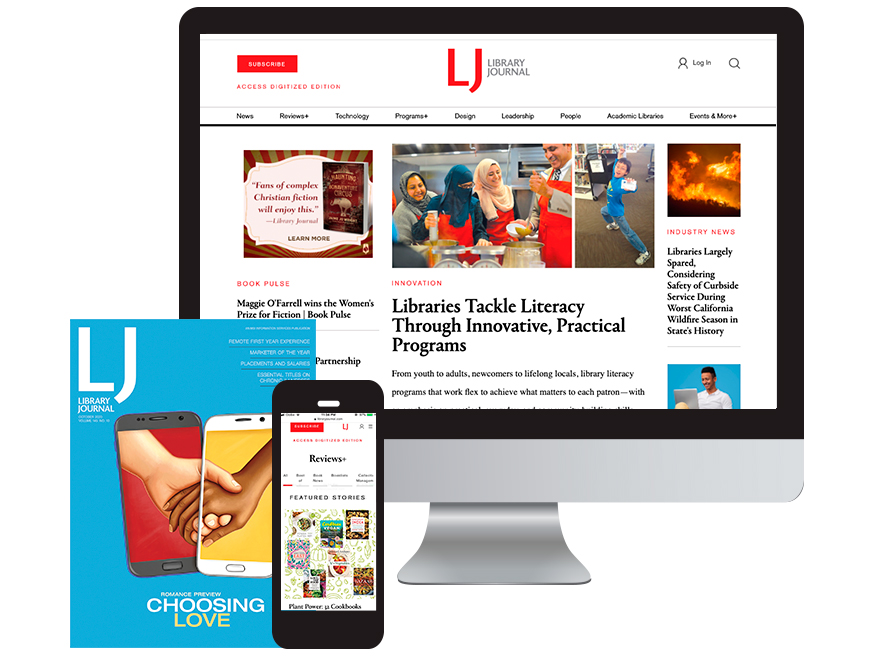Case Study: The Small Steps You Can Take Toward Your Library Building Future | Library by Design, Spring 2012

When Mary Hougland took over as director of the Jennings County Public Library in rural North Vernon, IN, in January 2008, she wanted to turn the nearly 34,000 square foot, modern pole barn structure, a characterless building erected in 1997, into a “user-friendly” destination that would be “someplace where people wanted to hang out.”
Her first step: add color. She rebranded the grey-and-white structure with a gold, magenta, and blue scheme, visible on signage and library PR materials. Second step: a renovation to bring the library in this farming community of 28,000 into the 21st century.
THE PLAN
Hougland had $600,000 in library savings to put toward the project. In 2009, she hired library consultant Kimberly Bolan Cullin, an LJ 2004 Mover & Shaker, to conduct studies and conceive of a plan.
Space was not an issue; using it well was. There was no teen area, nor was there any kind of youth center in town. Hougland and Cullin envisioned a teen destination with five new computers and room for recreation, education, and study. They proposed an expanded children’s section with zoned spaces for different ages as well as literacy-enhancing equipment and flexible furniture. The plan included two small meeting rooms for tutoring and other purposes, a quiet study area, self-checkout equipment, improved technology, and upgraded heating and electrical components. Reconceiving the bulky main desk was key, as was adding more color and new furniture. Total cost: $1.7 million, $1.1 million of which would come from a proposed 15-year property tax bond measure.
THE SETBACK
Hougland and Cullin planned to present their ideas to the community in standard focus groups, but the library board saw this as an unnecessary expense. Only one public forum took place, in July 2010, at the request of the Jennings County County Council. At that meeting, 85 percent attending were in favor of the renovations, Hougland says, and two newspaper polls in June and July also showed majority favor. But when the council voted on the proposal that August, it was turned down by a vote of four to three.
“The council said, ‘Use the money you have,’ ” Hougland recalls. “I felt like we were being punished for being fiscally responsible.” In Cullin’s view, the absence of planned community meetings and therefore awareness of the renovation’s benefits was the bond’s death knell. While the board’s decision “saved a few thousand dollars,” it cost the library the $1.1 million, she believes.
Hard lessons learned; time to move on. After “mourning,” Hougland decided to “jump back on the wagon and use the money we had.” She garnered an additional $14,794 in donations, including $5000 from the local OnSpot Foundation. An additional $18,206 came from the library’s operating budget.
A NEW SOLUTION
With this $633,000 in hand, she thought hard about what would make the most difference to Jennings County—including those residents who disapproved of the bond measure. Work started on August 15, 2011, and finished on October 30.
Instant impact was key. Almost $240,000 went to furniture. “The furnishings, color scheme, and layout of the main area are the most eye-catching and what patrons notice first,” Hougland says. The teen area came next. Using some of the $143,352 construction and demolition budget, she carved up a 10,000 square foot storage room to create a 4500 square foot teen area with an industrial look, comfortable seating, and a collaborative study area. Another $7,683 went toward an acoustical ceiling. Other storage space was turned into one small meeting room.
Next, Hougland replaced the large service desk with a smaller service point near the adult computer area. She added $26,000 in digital signage and laid down electrical work for future expansion, spending $89,200 on electrical work and $48,742 on HVAC.
Postponing the grand plans for the children’s area was a strategic budget decision. “It will be an easier renovation down the road, as people are typically more supportive of children’s spaces than adult and teen areas,” says Cullin. In the meantime, she and Hougland installed a new children’s rug, built an office for the children’s librarian, and expanded the area slightly by building a curved wall. Hougland also kept the work local: 75 percent of the furnishings were made in Indiana, and the construction was done by nearby contractors.
Her goal now is to fund the rest of the renovation through donations. She has created what she calls a “Dream Big” brochure and is speaking with community organizations about her ideas. Plans include the installation of self-check kiosks, more technology, another small meeting room, a quiet area, and additional elements to the teen space, as well as a new kids’ area.
For now, people like what they see. “I came across a 14- or 15-year-old laid out on the chairs in the teen area, Hougland reports. “He looked at me and started to get up, and I told him he didn’t need to; this area is for him. He said, ‘I never thought I’d have a place like this to go to.’ ”
Sarah Bayliss has written for LJ, the New York Times, Boston Globe, and ARTnews magazine, among other publications.
RELATED
ALREADY A SUBSCRIBER? LOG IN
We are currently offering this content for free. Sign up now to activate your personal profile, where you can save articles for future viewing









Add Comment :-
Comment Policy:
Comment should not be empty !!!